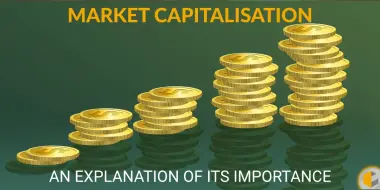
What is a cryptocoin?
It probably would have been easier for our ancestors to understand what a cryptocoin is then many of us today.
To understand cryptocoin, lets travel back a few hundred years to when bartering was the common method to transact. Say you had a rice farm but you wanted to obtain some wine. You could approach the nearest vineyard and trade your rice for their wine, but what if they didn’t want any rice? You could identify what they were interested in, say wheat for this example, and then look to make a three-way trade with a wheat farmer (the wheat farmer ends up with rice, the winemaker with wheat and you with the wine). But what if you couldn’t find a wheat farmer who wanted rice? You can see how convoluted this could quickly become.
The solution to this was to create an intermediate currency: a physical object that was difficult to come by, couldn’t be faked and was resilient enough to be stored or traded indefinitely. Gold, other precious metals and stones became this medium. Our rice farmer would trade rice for gold and then use that gold to buy wine. The object was the value.
This then evolved into making objects such as coins and notes. These objects represented the value. Instead of having 100 pieces of gold, you had objects that represented that 100 pieces of gold. This made transactions even easier as you no longer needed to carry your gold around with you or struggle to divide it to purchase your item.
In its final and current form, currency has moved away from being tied to a physical object. Today, currencies are tightly controlled by governments to manage its value internationally for trading with foreign currencies. They also like to monitor its usage for taxation and law enforcement purposes. Governments generally do this with the best intention but they don’t always get it right (or people perceive that their governments have made a mistake). Examples of this includes the current US national debt, Greek capital controls, Zimbabwe Inflation, etc
Bitcoin, the original cryptocoin, created a finite number of objects that need to be discovered before they can be spent (similar to gold). It is built on a system where every transaction is made public in order to make it verifiable (the blockchain). There are no governments with explicit control over it. It is left up to the majority of users to declare what is, or is not, a valid transaction.
So where does a cryptocoin come from?
Bitcoin, and all of the crypto currencies since, rely on cryptography to provide digital security and assurance. It is used to prevent anyone claiming ownership of something that is not theirs. In the case of Bitcoin, it takes a distributed network of users performing intense computations to verify each and every transaction that occurs on the network. To encourage people to provide this service, the bitcoin program rewards users who provide the verification with bitcoins of their own (or to share, if they are operating in a group). This ensures that enough people are encouraged to protect the safety of the protocol and that new coins are continually added the the eco-system. This system is known as ‘mining’.
How does a cryptocoin have a value?
Things become valuable through scarcity and desirability. Most cryptocoins start with a limited number of coins and try to fulfill a function in order to become desirable. Bitcoin has an extremely simple function: to become a reliable and trustworthy method to transfer value between people online.
… after more than a decade of failed Trusted Third Party based systems (Digicash, etc), they see it as a lost cause. I hope they can make the distinction, that this is the first time I know of that we’re trying a non-trust based system.
– Satoshi Nakamoto in an E-Mail to Dustin Trammell
In January 2009, Satoshi launched Bitcoin onto the world, describing it as
… a new electronic cash system that uses a peer-to-peer network to prevent double-spending. It’s completely decentralized with no server or central authority.
– Satoshi Nakamoto on the original reelase of the Bitcoin Core project on SourceForge
In 2009 it caught the attention of a few people, but there was no centralised marketplace to exchange. At best, many users treated it like a science experiment and would trade directly with other users for online goods or services such as pizza as one story goes. Eventually, the ease in transferring value and the anonymity of its users saw Bitcoin become more useful to people and thus more valuable.
Websites were set up where you could exchange standard currency for bitcoin. By 2013, it was hovering between a value of \$10 to \$20 USD, a price many considered to be an astronomical at the time. It did peak around $1,000 USD towards the end of 2013 but then settled back down to $200 to $500 until the end of 2016. At this stage, the Bitcoin protocol had proven itself to be resilient to attacks, reliable, and importantly, more and more people were using it as a means to transfer money and purchase goods from online stores.
2017 was the break out year for Bitcoin. It was frequently reported on in mainstream media and the number of people using it kept growing; it was no longer a science experiment. Throughout 2017, Bitcoin kept achieving new all-time-highs. By the end of the year it was touching on $20,000 USD.
Bitcoin has demonstrated it can fulfill its function as a decentralised currency. The Bitcoin Core program ensures there is a consistent, but limited, number of coins added to the pool so that inflation grows in step with its use. This creates the scarcity and desirability required to have a value; a value that has grown significantly in the past few years.
If you are considering purchasing cryptocoin, please see our How to buy Cryptocoins. guide for Australians.
Editor-in Chief
Related Posts






Subscribe to our newsletter!
Information



